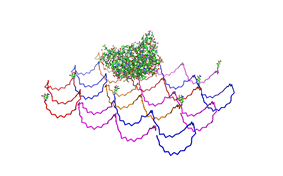Team:Freiburg
From 2008.igem.org
m |
m |
||
| Line 20: | Line 20: | ||
<td> | <td> | ||
[[Image:Freiburg08_MSRS_Schema.png|thumb|270px|left|Schematical overview of the system]] | [[Image:Freiburg08_MSRS_Schema.png|thumb|270px|left|Schematical overview of the system]] | ||
| - | <br><br><br><br> | + | <br><br><br><br><br><br><br><br><br><br><br><br><br><br><br><br> |
</td> | </td> | ||
<td> | <td> | ||
Revision as of 22:36, 29 October 2008
|
Home |
_welcome!
The first German team to participate in iGEM ever is back again, providing you with an excellent set of fusion proteins for modular use as BioBricks. This year we are crafting a synthetic receptor kit "made in Black Forest", using DNA-Origami as programmable input device and the complementation of split-fluorophores and -enzymes as readable output. Project Abstract
Support |
 "
"




